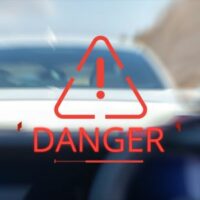The Dangers Of Tailgating

While most people are aware that tailgating can cause accidents, many drivers continue to engage in this dangerous behavior. In most cases, it is the tailgating driver, or the driver who strikes another vehicle, who is held liable for any resulting injuries. There are, however, a few exceptions to this rule, with which injured parties should be familiar, so if you were rear-ended in a car crash, you should consider working with a Tulsa auto accident lawyer, who can help improve your chances of filing a successful claim.
What is Tailgating?
Vehicles require time and distance to stop, regardless of how skilled a driver may be. Tailgating occurs when one driver follows another vehicle too closely, eliminating the cushion in which a vehicle can stop without striking the car in front of it. Driver’s education courses typically teach drivers that they should trail the car in front of them by at least three seconds. As a person’s speed increases, however, the distance covered in this three seconds also goes up.
Tailgating drivers are much more likely to be involved in rear-end collisions, which are notorious for resulting not only in serious injuries, but also significant property damage.
Reaction Time
The time it takes for a driver to react and avoid a rear-end collision is made up of a number of actions, including:
- Seeing the other vehicle’s brakes;
- Processing those brake lights;
- Deciding how to react; and
- Moving one’s body to apply the brakes and turn the wheel.
While it may seem like a driver could make all of these decisions in the blink of an eye, the reality is that drivers have to contend with a host of distractions. Furthermore, tailgating drivers are often agitated, fatigued, or even intoxicated, all of which can further slow reaction time. This means that many tailgating drivers simply don’t have the time to hit the brakes and avoid a collision.
Braking Capacity
Besides reaction time, a driver’s ability to avoid a rear-end collision will also depend on the particular vehicle’s braking capacity, or the time it takes to bring a vehicle to a complete stop. This doesn’t depend on the driver’s skill or focus, but on the physical characteristics of the vehicle, including:
- The vehicle’s weight;
- The quality of the tires;
- Tire pressure;
- The quality of the brakes; and
- A vehicle’s specific safety features.
Even road conditions and the vehicle’s speed can come into play when determining braking capacity. Basically, to avoid a rear-end collision, a tailgating vehicle must have better braking capacity than the leading vehicle. A vehicle with worse braking capacity, or that is being operated by a driver with a slower reaction time, is much more likely to be involved in a rear-end collision.
Were You Rear-Ended?
If you were rear-ended by a tailgating driver, you could be entitled to compensation for your medical bills, lost wages, and vehicle damage. For help filing a claim, please call 918-492-4433 and set up a meeting with the dedicated Tulsa auto accident lawyers at Levinson Law, P.C. today.
Resource:
uti.edu/blog/collision/rear-end-collision-damage

